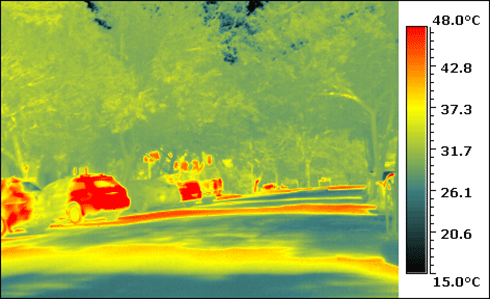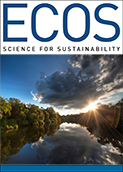
|
Published: 8 December 2014
Greener cities are cooler cities in summer: new guide reveals how
Australian councils are being urged to take up new guidelines in green urban planning to create cooler cites with greener landscapes to reduce the risk of heat stress.

|
|
Thermal imaging shows how mature street trees create a dramatic cooling effect on city streets on a hot day. Credit: University of Melbourne
|
Australia is experiencing a trend of hotter temperatures and as a result heat stress is now a serious health problem for Australians who live in urban areas.
Research led by the University of Melbourne and published in the Journal of Landscape and Urban Planning recommends interventions to cool urban hot spots, such as green roofs, walls and facades.
‘Our research has developed a framework for better urban green infrastructure that can reduce urban air and surface temperatures,’ said the author of the guidelines, Dr Nick Williams.
‘During the day buildings and streets absorb solar radiation and release the heat at night keeping urban areas warmer than the surrounding countryside.
‘But this can be tempered with a range of effective urban green designs. This includes greater use of trees, green roofs and facades,’ said Dr Williams.
Using thermal images Dr Williams and his collaborators at Melbourne and Monash Universities studied the inner south-eastern City of Port Phillip as a typical urban environment.
‘The City of Geelong has adopted the framework and we are hoping other Australian councils and shires will follow suit as its now community health issue.’
The research identified ‘hot spots’ and addressed factors like street geometry, soil and water availability, maintenance issues and community behaviour.
Source: University of Melbourne



